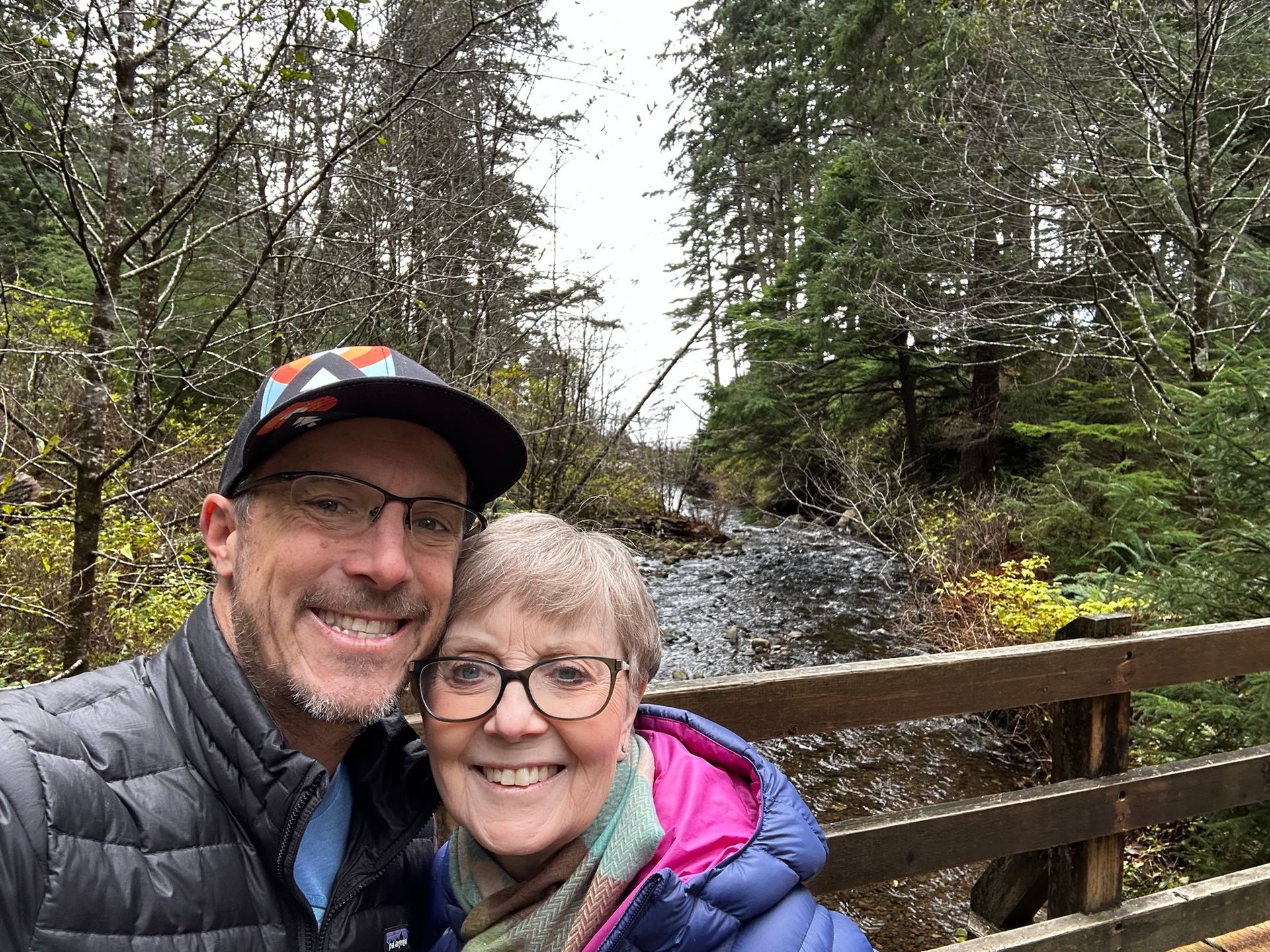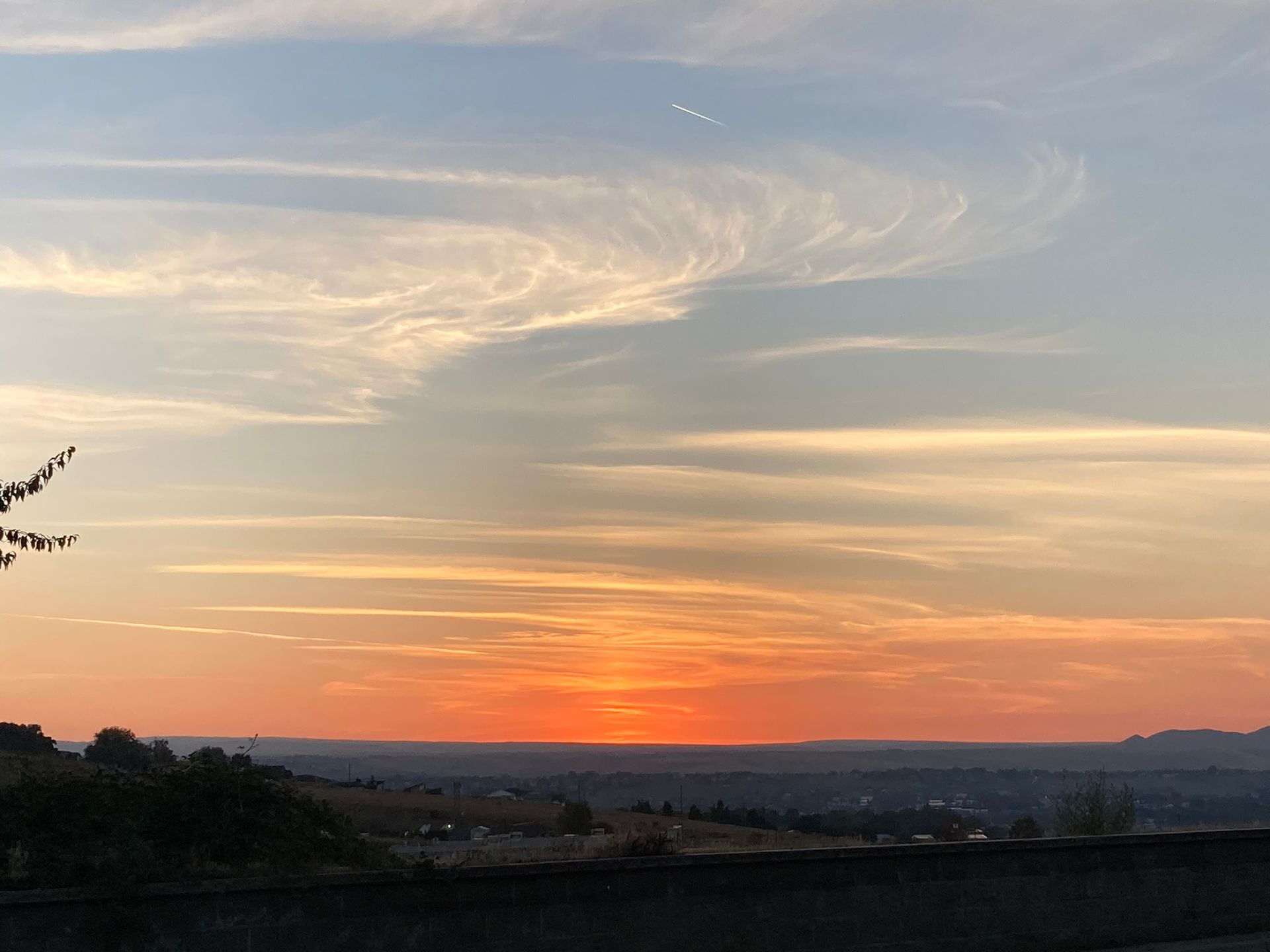Beginning Our Journey on the Camino de Santiago
This isn’t really something one just ticks off a list.

Walking above clouds with my son Shane on my 70th birthday.
“For centuries, this cry in the heart for embarking upon a meaningful journey has been answered by pilgrimage, a transformative journey to a sacred center.”
Phil Cousineau
The Art of Pilgrimage: The Seeker’s Guide to Making Travel Sacred. p. xxix
On my 70th birthday I was walking the Camino de Santiago with my son Shane, who at 50 was less than a month away from his 51st birthday. The Camino de Santiago, which translated means The Way of St. James (in French, it is Chemin de St Jacques), is on the so-called bucket list of many people but, to me anyway, it was far more important than being on that now-cliché term, bucket list. It is and has been a place of pilgrimage for millions (200,000/yr these days) since the 9th century. This isn’t really something one just ticks off a list. It turns out to be a commitment to something. Something deep, and something that is both different for different people, and in many ways the same for all people who venture onto the path.
The Way is really a number of ways, starting from different points but all ending up at the “shrine of the apostle Saint James the Great in the cathedral of Santiago de Compostela in Galicia in northwestern Spain, where tradition holds that the remains of the apostle are buried” (Camino de Santiago). People walk these paths for differing reasons, some simply to test themselves, some to sort out a difficulty they are struggling with, some to experience the beauty of the country, and some as a religious/spiritual experience. The reasons people travel the Camino these days are intimate, personal, and often communal.
One of the beautiful aspects of walking along with others is meeting these pilgrims, who come from around the world. (In the past, these purposes weren't always so voluntary. One’s pilgrimage may have been ordered by the church as penance, or could be ordered as a punishment for a crime.).
Phil Cousineau, in his excellent book, The Art of Pilgrimage: The Seeker’s Guide to Making Travel Sacred, says:
If Mark Twain was right when he said that travel is the death of prejudice, then pilgrimage is the birth of open-mindedness and the rebirth of what the ancient Greeks called xenophilia, the love of strangers, an appreciation of foreign cultures, a passion for understanding what is other” (p. xx).
Xenophilia – the love of strangers, and the opportunity to learn from the richness of that perspective and approach to life.
What an embracing thought, as our country and globe seem to demonstrate the opposite - xenophobia, the fear of strangers -even within our own nations, far more than is healthy.
For this walk, I had three objectives:
- Spend meaningful time with Shane
- Discern more deeply the direction of the next phase of my life
- Experience the present moment, the presence of the sacred, the spiritual, the divine
It wasn’t hard for me to sense the sacred. Simply taking a step on the path, where hundreds of thousands each year – who knows how many millions all told – have taken the deliberate risk of opening their hearts to this “transformative journey to a sacred center,” as Cousineau calls pilgrimage, was enough to feel that presence.
My time with Shane, who organized the whole trip, was beyond meaningful. It was a pleasure, a joy, and I will always cherish this time spent with him.
As to the next phase of my life? Well, at 70, I’m excited about the possibility that these next years might be the one of the richest times of my life.
This year, we spent just a few days on the Camino, and finished just 65 miles of the 500 miles it will take to complete the entire journey. We almost spontaneously, on the trail, agreed to come back next year, and the year after that, and the year after that, until we – son and father – walk into Santiago de Compostela together.
I can’t wait for next year.
References
Camino de Santiago, https://en.wikipedia.org/wiki/Camino_de_Santiago
Cousineau, P. (2021). The art of pilgrimage: the seeker's guide to making travel sacred. Conari Press. (2012)

The scallop shell is a symbol traditionally worn by pilgrims on the Camino.










